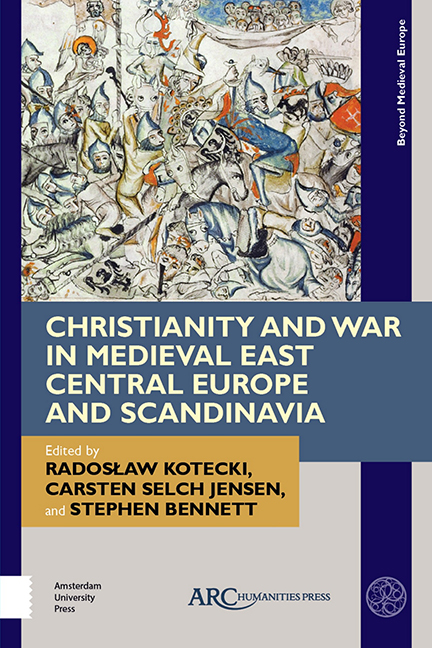Chapter 8 - Pious Rulers, Princely Clerics, and Angels of Light: “Imperial Holy War” Imagery in Twelfth-Century Poland and Rus’
Published online by Cambridge University Press: 27 May 2021
Summary
IN HIS CLASSIC article Der Heilige als Schlachtenhelfer František Graus noted that Polish medieval narrative sources, unlike many local European historiographies, were devoid of a saint to take special military care of the nation and its rulers. In his opinion, this resulted from the ecclesiastical dominance over the cult of Polish Landespatronen, St. Vojtěch-Adalbert of Prague and St. Stanisław of Kraków, both saintly bishops. As he observed, the situation was much different in neighbouring Bohemia. Here, St. Václav, a dynastic saint and dux perpetuus, served as the dominant saintly protector for his familia in battle. Graus's attention was, however, drawn to the fact that medieval Polish sources have some references to mysterious, mostly unnamed angelic apparitions, which were said to have helped Polish rulers in their martial struggles. Although Graus stated that angels could have served as military patrons of the polities or gentes, he did not consider such a possibility in the case of the Piast domain. Here, he merely provided a list of angelic interventions, mainly from late medieval Polish sources.
Graus's research also shows that military angelic patronage was characteristic of earlier periods—Late Antiquity and the Early Middle Ages. He based his view on the example of the cult of St. Michael he had found among the Franks. It is, however, well known today that the military competence of angels attracted much wider interest across early medieval Europe. The origins of this phenomenon can be traced back to the special bond that was established with the Archangel by the Lombards, who were known for taking effigies or banners depicting St. Michael when going to war. Only after Charlemagne seized Italy did a similar custom develop amongst the Franks. These beliefs lasted in the eastern Frankish realm at least until the second half of the tenth century, when St. Maurice was associated with the Ottonian Holy Lance and became the main patron of the Empire. The accounts of Widukind of Corvey about the battles of Riade (933) and Lechfeld (955) encouraged readers to believe that the German kings, Henry I and his son Otto, considered the angel as their battlefield guardian against the Hungarians.
- Type
- Chapter
- Information
- Publisher: Amsterdam University PressPrint publication year: 2021



